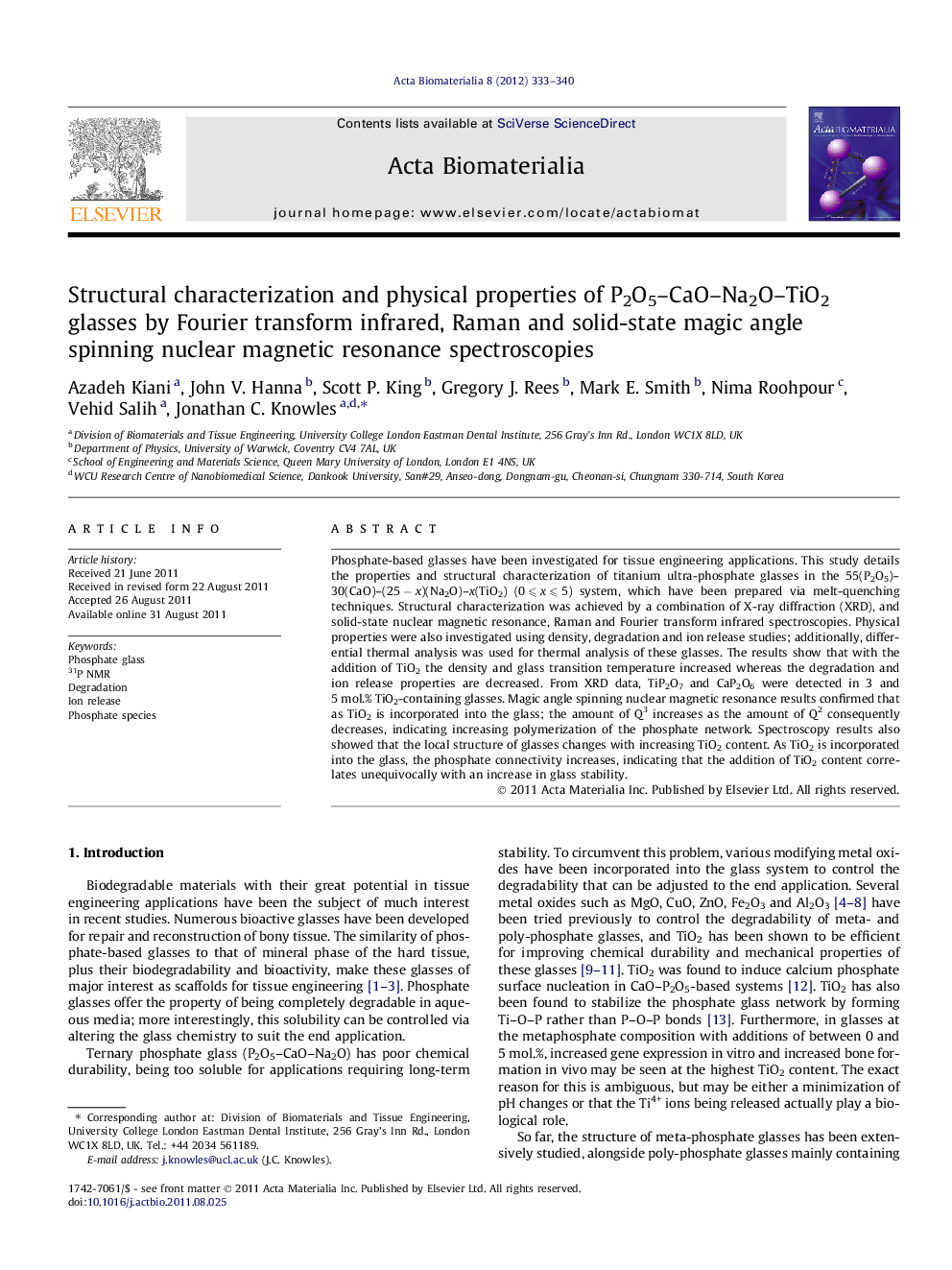| Article ID | Journal | Published Year | Pages | File Type |
|---|---|---|---|---|
| 10160111 | Acta Biomaterialia | 2012 | 8 Pages |
Abstract
Phosphate-based glasses have been investigated for tissue engineering applications. This study details the properties and structural characterization of titanium ultra-phosphate glasses in the 55(P2O5)-30(CaO)-(25 â x)(Na2O)-x(TiO2) (0 ⩽ x ⩽ 5) system, which have been prepared via melt-quenching techniques. Structural characterization was achieved by a combination of X-ray diffraction (XRD), and solid-state nuclear magnetic resonance, Raman and Fourier transform infrared spectroscopies. Physical properties were also investigated using density, degradation and ion release studies; additionally, differential thermal analysis was used for thermal analysis of these glasses. The results show that with the addition of TiO2 the density and glass transition temperature increased whereas the degradation and ion release properties are decreased. From XRD data, TiP2O7 and CaP2O6 were detected in 3 and 5 mol.% TiO2-containing glasses. Magic angle spinning nuclear magnetic resonance results confirmed that as TiO2 is incorporated into the glass; the amount of Q3 increases as the amount of Q2 consequently decreases, indicating increasing polymerization of the phosphate network. Spectroscopy results also showed that the local structure of glasses changes with increasing TiO2 content. As TiO2 is incorporated into the glass, the phosphate connectivity increases, indicating that the addition of TiO2 content correlates unequivocally with an increase in glass stability.
Related Topics
Physical Sciences and Engineering
Chemical Engineering
Bioengineering
Authors
Azadeh Kiani, John V. Hanna, Scott P. King, Gregory J. Rees, Mark E. Smith, Nima Roohpour, Vehid Salih, Jonathan C. Knowles,
